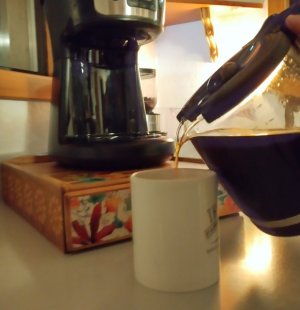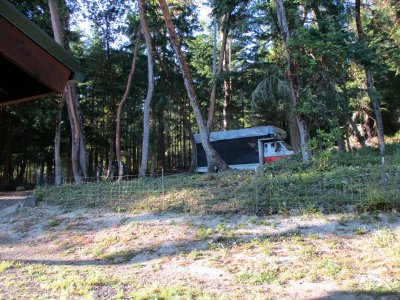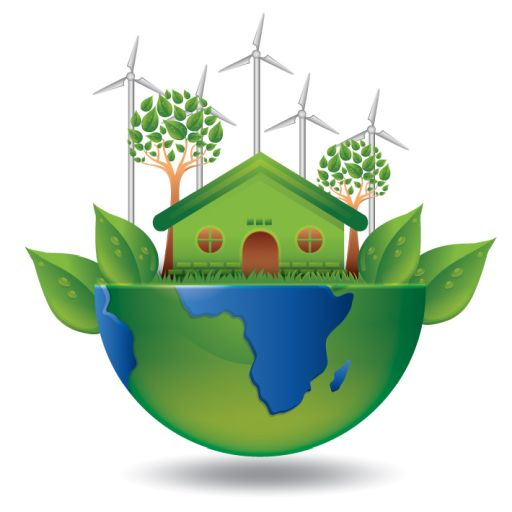Why do I feel like five minutes around you would make anyone smarter and educate even the most city slicker into a decent country person. Thank you for the information! And I hope your surgeries work wonderfully.@CrealCritter ... I miss your posting on BYH because I don't go on here as often. And I had bilateral knee replacements (BOTH AT ONCE) the end of Oct so was not on here for several weeks and am trying to get them working and getting back to some work and normal life...
First, these cattle are not straight dexters. Not trying to be negative. Dexters are in 3 colors, black, dun and red. White hair except a minute amount, is a disqualification. Originally Dexters were raised as a "tri-purpose" animal... much like the devons and shorthorns... milk, meat and draft animals.
They are smaller cattle but are not a "true miniature".... 600 lb cows and 1,000 lb bulls is not mini but definitely smaller than the standard size of most cattle in the 1,000 to 1400 lb cows and 1800 to 2400 lb bulls.
The ones we called "lowlines" are a line of angus that are now called Aberdeen Angus... they also are a smaller sized angus.
What it looks like in the pictures is belted Galloways... probably crossed....maybe with dexters. NOTHING WRONG with that. Galloways are maybe little smaller than "average beef cattle". The big deal about galloways... which come in black, red dun, and more rarely a white with darker points, like a speckled park.... and BELTED. They are related to angus but they have a very heavy winter coat... they are actually what we call double coated and the extra coat of hair helps to keep them warmer in the wet winters AND allows them to NOT put on alot of backfat. But they will get up to the 1,000 lb and 16-1800 lb sizes.
There is also a breed of dairy cattle known as Dutch Belted... they are mostly for milk and do well on grass operations.
Galloways and Scottish Highland have the double hair coat. Both have shorter legs than many of the "modern" beef breeds. They are not good breeds for "modern" type farms due to them not bringing any kind of money due to feedlots not wanting them. But they are IDEAL for the smaller farmsteads and personal use. The cuts are a little smaller which works for smaller families.
I have not heard of anyone milking a belted galloway or a scottish highland... but that has as much to do with the docility of the particular animal.... I have friends that have milked 1/2 hereford - 1/2 dairy animals... I have milked some 1/2 jerseys 1/2 angus cows.
They look like nice animals.... but please do not mistakenly call them dexters as they are not.... They might be a percentage, but they have either belted galloway or Dutch belted in them.... The belt is very prepotent... it will show up for years and years. I presently have 2 bred belted heifers that are a percentage angus.... I have had many over the years and really like them. I am currently looking for a Dutch belted cow or heifer to add to my nurse cow group and for some milking. Now that my replaced ankle (FEB 2020); and now both the knees in late Oct 2021, are healed/healing, I hope to get back to my nurse cows next year raising calves on them. We are also selling a little more beef direct to customers in either halves or whole animals since we use a state inspected facility not a USDA facility. My calves raised off the cows is a bit of work but they more than pay for the cows and puts a little in the kitty for the next bunch. The 6 cows are farmed out to a dairy farm for the time being knowing I was going to need these surgeries. I get my milk off a friend's farm that milks 3-5 brown swiss right now, but will go back to milking my own for the house next year I hope.
You are using an out of date browser. It may not display this or other websites correctly.
You should upgrade or use an alternative browser.
You should upgrade or use an alternative browser.
Coffee's Ready, Come and Sit on the Porch
- Thread starter The Porch
- Start date
CrealCritter
Sustainability Master
- Joined
- Jul 16, 2017
- Messages
- 12,295
- Reaction score
- 26,598
- Points
- 397
- Location
- Zone 6B or 7 can't decide
Wow I missed you FJ. I was thinking about you the other day so I said a little prayer for you and here you are. So glad to hear from you, I missed your wisdom and knowledgable helpful insights. I didn't know about surgery on your knees. Prayers for a speedy strengthful recovery.@CrealCritter ... I miss your posting on BYH because I don't go on here as often. And I had bilateral knee replacements (BOTH AT ONCE) the end of Oct so was not on here for several weeks and am trying to get them working and getting back to some work and normal life...
First, these cattle are not straight dexters. Not trying to be negative. Dexters are in 3 colors, black, dun and red. White hair except a minute amount, is a disqualification. Originally Dexters were raised as a "tri-purpose" animal... much like the devons and shorthorns... milk, meat and draft animals.
They are smaller cattle but are not a "true miniature".... 600 lb cows and 1,000 lb bulls is not mini but definitely smaller than the standard size of most cattle in the 1,000 to 1400 lb cows and 1800 to 2400 lb bulls.
The ones we called "lowlines" are a line of angus that are now called Aberdeen Angus... they also are a smaller sized angus.
What it looks like in the pictures is belted Galloways... probably crossed....maybe with dexters. NOTHING WRONG with that. Galloways are maybe little smaller than "average beef cattle". The big deal about galloways... which come in black, red dun, and more rarely a white with darker points, like a speckled park.... and BELTED. They are related to angus but they have a very heavy winter coat... they are actually what we call double coated and the extra coat of hair helps to keep them warmer in the wet winters AND allows them to NOT put on alot of backfat. But they will get up to the 1,000 lb and 16-1800 lb sizes.
There is also a breed of dairy cattle known as Dutch Belted... they are mostly for milk and do well on grass operations.
Galloways and Scottish Highland have the double hair coat. Both have shorter legs than many of the "modern" beef breeds. They are not good breeds for "modern" type farms due to them not bringing any kind of money due to feedlots not wanting them. But they are IDEAL for the smaller farmsteads and personal use. The cuts are a little smaller which works for smaller families.
I have not heard of anyone milking a belted galloway or a scottish highland... but that has as much to do with the docility of the particular animal.... I have friends that have milked 1/2 hereford - 1/2 dairy animals... I have milked some 1/2 jerseys 1/2 angus cows.
They look like nice animals.... but please do not mistakenly call them dexters as they are not.... They might be a percentage, but they have either belted galloway or Dutch belted in them.... The belt is very prepotent... it will show up for years and years. I presently have 2 bred belted heifers that are a percentage angus.... I have had many over the years and really like them. I am currently looking for a Dutch belted cow or heifer to add to my nurse cow group and for some milking. Now that my replaced ankle (FEB 2020); and now both the knees in late Oct 2021, are healed/healing, I hope to get back to my nurse cows next year raising calves on them. We are also selling a little more beef direct to customers in either halves or whole animals since we use a state inspected facility not a USDA facility. My calves raised off the cows is a bit of work but they more than pay for the cows and puts a little in the kitty for the next bunch. The 6 cows are farmed out to a dairy farm for the time being knowing I was going to need these surgeries. I get my milk off a friend's farm that milks 3-5 brown swiss right now, but will go back to milking my own for the house next year I hope.
Jesus is Lord and Christ
CrealCritter
Sustainability Master
- Joined
- Jul 16, 2017
- Messages
- 12,295
- Reaction score
- 26,598
- Points
- 397
- Location
- Zone 6B or 7 can't decide
I really missed you Farmer Jan, nothing more to say hereP.S. I don't want you to get taken advantage of. There is NOTHING WRONG with crossbred animals.... but please don't perpetuate the myth that they are belted dexters.... there is no such animal. And I don't want someone to sell you something that is not what they are claiming it to be. And one other thing... I would not keep a bull for only 2 or 3 cows. Get them bred AI.... and run an extra cow. A bull can be very docile and easy to handle .... until it isn't. We run 10-12 bulls all the time.... we have alot of cattle and rent many smaller 10-30 acre places where we have to have bulls to breed these cows... Or use a bull for breeding and then put him in the freezer... and yes, bulls make good meat if not real old.... they put weight on and gain well and for the most part are pretty lazy.
Having a bull for only 2-3 cows will cost you way more than AI service and you will have to deal with him sooner or later not being happy with nothing to do and then they get to roaming, or get attitudes or something. A bull is not for a beginner to keep around. And please... if you do have one....do NOT ever rub or push on him from the front of the head.... ALWAYS rub, scratch from the side of the neck..... head to head is their way to show dominance.... you cannot win and do not want to start a bad habit that you will not break and will lose out in the long run.
Jesus is Lord and Christ
CrealCritter
Sustainability Master
- Joined
- Jul 16, 2017
- Messages
- 12,295
- Reaction score
- 26,598
- Points
- 397
- Location
- Zone 6B or 7 can't decide
Proverbs 27:23~27
Jesus is Lord and Christ


Jesus is Lord and Christ
- Thread starter
- #925
The Porch
Super Self-Sufficient
OH WOW, and WOWI had bilateral knee replacements (BOTH AT ONCE) the end of Oct so was not on here for several weeks and am trying to get them working and getting back to some work and normal life...
There was a guy at church, well 2 different ones that had knee surgery, guy#1 had very bad knees to start with and didnt move as much as the PT person told him to, his legs started locking up, he didnt do as well and most likely never get to 100%
guy#2 is a very active person and cant sit still, he was determined to move and did everything the PT told him, he did great and is 100%
Everyone is different and handles it different, I just cant even imagine going through it,
Thank you for all the cow info. We have always been attracted to Highland cows , and no we dont know squat about raising cows, but I would live to have a small breed milk cow.
again Jan, I am so sorry for all you have been through, and it just now hit me that maybe farmerJamie and you are related? I think I remember him saying his wife was down and I never put two and two together. I may PM you latter about a milk cow.
Becky
- Thread starter
- #926
The Porch
Super Self-Sufficient
 going to go get more coffee,
going to go get more coffee,  I need to visit BYC's a bit, later, we are taking a bit of a worrisome drive.
I need to visit BYC's a bit, later, we are taking a bit of a worrisome drive.
We have that older diesel ford box truck that we star up every month, but it has sat for 9 years. We put new tires on it in 2012 when we bought it from our neighbor. We drove it 9 hours from down in Oregon to here. Its a good truck. I has been a great storage unit hahaha .
DH has had it checked out. A friend that works on trucks came over and actually drove it fully loaded (brave man) down our 16degree/ hill and back up, the engine smoked a bit from dust build up. He said the breaks were fine, he crawled all underneath it.
DH, he steamed the engine to clean off all the dirt and crud, filled the break fluid etc...
yes, I am a bit freaked out
 - if I have cell reception I get on via cell and let you know we got there safe
- if I have cell reception I get on via cell and let you know we got there safe
Last edited:
farmerjan
Super Self-Sufficient
Once the truck is off the road, then you cancel the insurance and you will get a refund. Don't even question the 6 months. And if you are going to sell it, you might even qualify for a refund on part of the tags...
farmerjan
Super Self-Sufficient
I don't think I even mentioned the knee replacements on here since I spend much more time on BYH. I am working on the PT and exercises as I INTEND to be back better than they were for the last 2 years. I had a nearly 2 week stint in a rehab that was the most awful experience there was and I felt like I would have rather died a couple of times. Benign neglect as well as inedible food... partly from the worker shortage and it affects everyone and everywhere. It was not where I was supposed to go originally, but I was doing "too good" after the surgery to go in what they called acute rehab... no one here to take care of me with my son trying to do his job, the farm, a GF who had just found out she has breast cancer and his father having a bout with covid... so I stayed in the rehab until I could get around on the walker by myself and then came home and started from scratch with "getting better"..
So, you do what you have to.
Stiff and sore, but getting more use daily. Having trouble with the right ham string and muscles and tendons since they had to do more work to straighten the right leg more than the left with the replacements. It's been tough. I can walk without the crutches or cane but still use the cane for balance some.
Back to testing the easier dairy farms for my job too. Should be back to full work by the first of the year.
Thanks everyone for the well wishes...
So, you do what you have to.
Stiff and sore, but getting more use daily. Having trouble with the right ham string and muscles and tendons since they had to do more work to straighten the right leg more than the left with the replacements. It's been tough. I can walk without the crutches or cane but still use the cane for balance some.
Back to testing the easier dairy farms for my job too. Should be back to full work by the first of the year.
Thanks everyone for the well wishes...
farmerjan
Super Self-Sufficient
No, no relation to @FarmerJamie ... I'm in Va....
CrealCritter
Sustainability Master
- Joined
- Jul 16, 2017
- Messages
- 12,295
- Reaction score
- 26,598
- Points
- 397
- Location
- Zone 6B or 7 can't decide
@farmerjan I would really appreciate your wisdom and advise on growing and graining (corn) these two steers. My processing date is early October 2022. both are currently a little over 500 lbs.
 www.sufficientself.com
www.sufficientself.com
So glad you are back, i.missed you!
Jesus is Lord and Christ


Coffee's Ready, Come and Sit on the Porch
@CrealCritter ... I miss your posting on BYH because I don't go on here as often. And I had bilateral knee replacements (BOTH AT ONCE) the end of Oct so was not on here for several weeks and am trying to get them working and getting back to some work and normal life... First, these cattle are...
 www.sufficientself.com
www.sufficientself.com
So glad you are back, i.missed you!
Jesus is Lord and Christ
